What, To The Republic Of Barbados, Does The 14th of May 1625 Mean?
May 16, 2025
By: David Comissiong
The content of this booklet has been reproduced here with the expressed consent of the author.
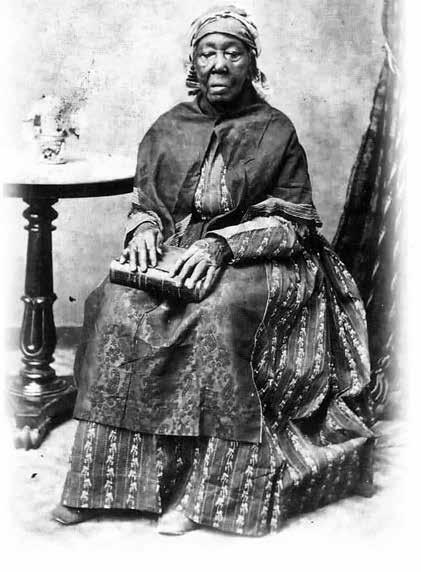
WHAT, TO THE REPUBLIC OF BARBADOS, DOES THE 400TH ANNIVERSARY OF 14TH MAY 1625 MEAN?
A question that many Barbadians will be repeatedly asking themselves and each other over the next twelve months is: “What, to the Republic of Barbados, does the 400th Anniversary of 14th May 1625 mean?”
Well, way back in November 1905—some 119 years ago—the colonial government and the local Anglophile social elite of Barbados purported to celebrate the 300th anniversary of the “discovery” of Barbados. These celebrations consisted of a state procession to the Garrison Savannah, a regatta in Holetown Bay, and the erection of tercentenary monuments at Holetown and Bridgetown.
I regret to have to record that they were all wrong and misguided in their actions—for two very different reasons.
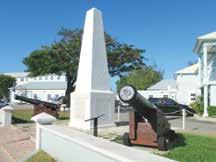
First of all, they had miscalculated the 300th anniversary of the first landing of the English in Barbados. They had been misled into believing that this historic event had taken place in July 1605, when, in fact, it had occurred some 20 years later! You see, it was actually on Wednesday the 14th of May 1625 that the Olive Blossom, a ship of the London merchant Sir William Courteen, under the command of Captain John Powell, landed at a site on the west coast of Barbados known as “the Hole” and claimed the island for King James I of England. Thus, this upcoming Wednesday 14th May 2025 will be the 400th anniversary of that historic first landing.
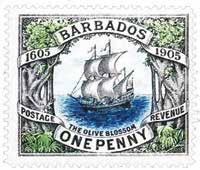
You see, it was actually on Wednesday the 14th of May 1625 that the Olive Blossom, a ship of the London merchant Sir William Courteen, under the command of Captain John Powell, landed at a site on the west coast of Barbados known as “the Hole” and claimed the island for King James I of England. Thus, this upcoming Wednesday 14th May 2025 will be the 400th anniversary of that historic first landing. The second reason why the Barbadian elite were wrong and misguided is because the Olive Blossom landing of 1625 could by no stretch of the imagination be described as the “discovery” of Barbados! The reality is that the island that the English took upon themselves to christen “Barbados” had been home to a multiplicity of generations of indigenous or native people stretching way back to the period of circa 1650 Before Christ (BC)! The archaeologists tell us that our indigenous predecessors migrated into the Caribbean from the northern coast of South America, and commenced their settlement and occupation of the beautiful 166 square mile coral island that they named “Ichirouganaim” (Red Land with White Teeth) in or about the year 1650 BC.
Over the centuries, Ichirouganaim experienced several waves of culturally related “Amerindian” migrants – people of the Saladoid–Barrancoid, Troumassoid and Suarzoid related cultures, and finally the Lokono or Arawak people.

BARBADOS AND NATIVE GENOCIDE
So how is it, you may ask, that the first party of English visitors to the island – Captain Powell and his company of seamen – were able to report that the island they stumbled upon in 1625 while they were making their way back to England from Dutch territory in what is now modern-day Brazil, was totally devoid of human inhabitants? Well, the sad but largely unacknowledged truth is that our island nation began the modern phase of its history with an act of genocide against its indigenous or native people.
Indeed, we can find solid historical documentation of this genocide in the pages of Sir Robert Schomburgk’s classic 19th century history text titled The History of Barbados as follows:- “Barbados was known to the Spaniards as early as the commencement of the sixteenth century, and apparently supplied slaves for the mines in Espanola…. indeed, the instructions of the Licentiate Figueroa (a Spanish official) prove that it (the island of Barbados) was resorted to by the Spaniards for the purpose of enslaving Indians.”
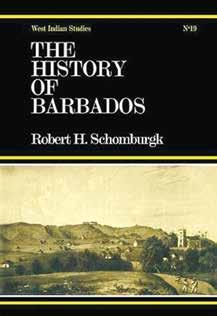
Thus, the island of Barbados/Ichirouganaim was systematically stripped of its 10,000 strong indigenous population during the course of the 16th century by virtue of an orchestrated campaign in which Spanish conquistadors periodically descended upon the island; kidnapped and enslaved its inhabitants; and shipped them off to labour and die as slaves in the mines of Hispaniola and other Spanish colonies. But, to get back to the story of Captain Powell and the first English landing in Barbados. Schomburgk informs us that:-
“The crew, finding it (the island) destitute of inhabitants, took possession of the country by erecting a cross upon the spot where Jamestown (subsequently named “Holetown”) was built, and cut upon the bark of a tree which stood near, “James K. of E. and this island,” that is, James, King of England and this island. They then followed the shore, until their progress was stopped by the river, which afterwards received the name of the Indian River, where the explorers performed a similar ceremony of taking occupation of the island: they did not however commence any settlement, and only stayed to refresh themselves.”
But, even though the events of 14th May 1625 cannot be given the grandiloquent title of a “discovery”, yet, they constituted a critical and seminal moment in the birth of modernity – the birth of the modern world! Indeed, the Olive Blossom’s accidental encounter with the island of Ichirouganaim set in train such a profound social, economic and political transformation of the world of the 17th century, that we, the 21st century citizens of the Republic of Barbados, are compelled to commemorate the 400th anniversary of 14th May 1625, even if not to celebrate it!
BARBADOS AND THE BIRTH OF THE BRITISH EMPIRE
First of all, by claiming the island for the national sovereign of England – King James I – Captain Powell and his fellow travellers were helping to establish the “imperialist mission” of the newly consolidated European nation states. What, To The Republic Of Barbados, Does The 400th Anniversary Of 14th May 1625 Mean? 6 You see, during the 15th and 16th centuries, the feudal barons of Europe had been reduced in power and had been placed under the control of powerful national Kings and Queens and subordinated to the power of the new citybased bourgeoisie. And this gave rise to the consolidation of powerful “nation states” on the territory of Europe – a totally new phenomenon. But here now was Captain Powell serving as a conduit for the power of that English nation state to embark upon a new mission of overseas expansion and imperialism in the Caribbean. Tragically, from small beginnings in Virginia (1607), St. Kitts (1623) and, most importantly, Barbados (1625), there eventually emerged the massive, earth-spanning criminal enterprise known as the British Empire – a mechanism of imperialist oppression and looting on which “the sun never set”. And as the English historian, Tristram Hunt, explained in his “Ten Cities that Made an Empire”, Barbados, and its capital city of Bridgetown, played a key role in the establishment of the super predatory British Empire.
BARBADOS AND THE BIRTH OF CAPITALISM
In addition, the rise of the European nation state went hand in hand with the birth and early development of the highly exploitative economic/political system of Capitalism, and here too, the small island of Barbados played a crucial role in that process as well! You see, the Olive Blossom belonged to and was operated by Sir William Courteen of the Anglo–Dutch Courteen merchant company, the prototype of a new breed of capitalist businessman – the wealthy transnational merchant prince with connections across the globe and a merchant fleet to link them all together under his control.
And so it was, that in less than two years from the 14th May 1625 landing, Sir William Courteen assumed the autocratic role of sole “Lord Proprietor” of Barbados, and fitted out an expedition under Captain Henry Powell – brother of John Powell – to establish a permanent settlement on Barbados.
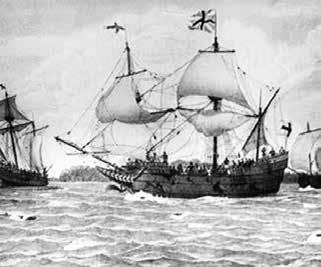
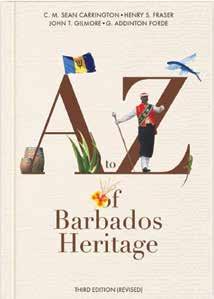
According to that veritable- Barbadian encyclopedia, The A to Z of Barbadian Heritage, on the 17th of February 1627 the William and John – a ship piloted by Captain Henry Powell – landed on the west coast of Barbados at the same site of “the Hole” and commenced the permanent English settlement of Barbados. They named the place James Town and went on to establish the town that is currently named “Holetown”. (Editor’s note: For many years Holetown comprised just two streets, First and Second Street, and the original landing site – “the Hole” – is located north of First and Second Street. Thus, it is false to claim that the current site of the Holetown Civic Centre is the location of “the Hole”, the site of the first British landings of 1625 and 1627)
SLAVERY IN BARBADOS
Arriving in Barbados on that 1627 expedition were eighty English settlers and ten enslaved Africans who had been forcibly captured from a Portuguese slave ship that the William and John had encountered during the voyage to Barbados. All ninety members of this human cargo were intended for deployment by the Courteen company in the establishment of a company-sponsored, agro-industrial colony to produce products for the European and wider international market. It may be usefully noted here that even though Sir William Courteen commenced the settlement of Barbados he did not get to complete the task, for in the said year of 1627, King Charles I – the son and successor of King James I – granted a Patent over the island of Barbados to the Earl of Carlisle, who, with considerable effort, inclusive of armed conflict between two opposing groups of settlers, eventually supplanted Courteen and took over the mission of fully “settling” Barbados. However, the grant of the Royal Patent to the Earl of Carlisle did not significantly change the trajectory of the path of the new colony, for Carlisle promptly gave a lease of 10,000 acres of Barbados to a consortium of London merchants who, in turn, sent out a group of settlers to Barbados under a Governor (Charles Wolverton) selected by them and appointed by Carlisle, and a Lieutenant Governor (John Swann) appointed by them.
It is fair to say, however, that Sir William Courteen’s initial 1627 settlement initiative contained the seeds of all of the elements that would combine together to produce in the little island of Barbados a number of precedent-setting developments that would significantly impact and shape the evolution of the modern world. Perhaps, most significant of all was the presence of the ten enslaved Africans at the very commencement of the project of “settling” Barbados. Thus, from its very inception, the early capitalist “Barbados project” was based on the establishment of a slave-based society, permeated with the evil notion of the commodification of human beings.
